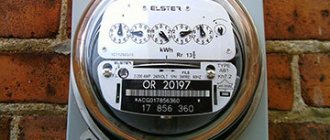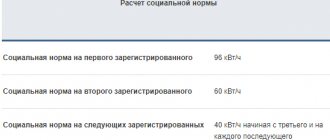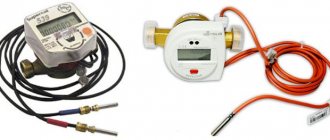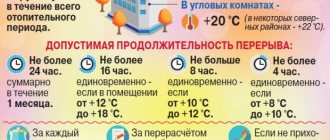As in previous years (for example, in 2022), the standard for heating hot water in the current 2022 is determined by sanitary and epidemiological requirements and is clearly outlined in SanPiN (Sanitary Rules and Norms), which in the Russian Federation have the status of a regulatory document. They establish both hygienic requirements for the quality of water supplied to citizens’ homes and temperature standards.
Boiler
Gcal standard for heating 1 m3 of water
The purpose of introducing a two-component tariff is a gradual transition to world standards, according to which calculations cannot be made for 1 m3 of hot water as the final product of production. This method of calculation is still in use, but by 2022 the cubic meter will be used according to a meter or consumption standard to account for the total volume of water used.
Using cold and hot water
The amount of heat to heat the cube is measured in Gcal (gigacalories). Calorie is the unit required to heat 1 g of water by 1 °C, under natural conditions - at normal atmospheric pressure.
To understand the value of Gcal as a unit of measurement, it is enough to understand that this volume of thermal energy for heating is enough to increase the temperature of a thousand tons of water by one degree.
The calculation of the standard for heating hot water in Gcal is legally stipulated by the “Rules for the accounting of thermal energy and coolant”, published and developed by the Ministry of Fuel and Energy of Russia back in 1995. Cold water consumption is carried out according to the meter, in cubic meters.
Standards for heating in the Tver region
The volume of thermal energy consumption is obtained by multiplying the norm established in the region for heating the cube by the water used by the consumer. Its quantity is determined by the installed meter or by regional standards.
In regions where a system of payment for hot water based on two components has not yet been introduced (for example, in the Chelyabinsk region), in 2022 they must develop a regulatory framework and switch to a generally accepted payment system. Such a measure will lead, albeit not very significant, to an increase in tariffs for hot water supplies.
Standards for heating in the Krasnoyarsk Territory
To prevent this from hitting the population’s pockets, certain measures have been taken in advance:
- In some regions of the federation, the introduction of the system was postponed, but in some places they have already come into effect on July 1, 2022.
- Average coefficients have been established for all regional entities. This is the maximum cost above which you cannot charge for hot water. They can be found in Executive Order No. 1347, dated November 12, 2022.
- There are limits that limit the powers of local governments. They are indicated in the order of the Government of the Russian Federation.
Standards in the Volgograd region
The size of the increase in tariffs for water heating varies. For example, the Government of St. Petersburg did not consider it necessary to use the figure of 6%, which is indicated in the order. 3.5% was considered a sufficient measure, which amounted to 59.45 rubles. Moscow will feel the rise in prices in different ways: Mosenergo will charge 130.27 rubles from the second half of the year. per cubic meter, and other companies - 163.36 rubles. per cube of heated water.
Gcal in private homes
If we talk about Gcal in a private house, then residents are primarily interested in the cost of heat energy for each type of fuel. Therefore, let’s look at some prices per 1 Gcal for various types of fuel:
- Natural gas – 3300 rubles;
- Liquefied gas – 520 rubles;
- Coal – 550 rubles;
- Pellets – 1800 rubles;
- Diesel fuel – 3270 rubles;
- Electricity – 4300 rubles.
The price may vary depending on the region, and it is also worth considering that the cost of fuel increases periodically.
Other methods for calculating Gcal for heating
You can calculate the amount of heat that enters the heating system in other ways. For example, the formula for calculating Gcal can have two other forms:
- Q = ((V1 * (T1 - T2)) + (V1 - V2) * (T2 - T)) / 1000.
- Q = ((V2 * (T1 - T2)) + (V1 - V2) * (T1 - T)) / 1000.
All values in these formulas are the same as in the previous formula. Based on the above calculations, we can conclude that you can calculate Gcal for heating yourself. But you should seek advice from special companies that are responsible for supplying heat to the house, since their work and calculation system may differ from these formulas and consist of a different set of measures.
If you decide to make a “Warm Floor” system in your private home, then the principle of heating calculation will be completely different. The calculation will be much more complicated, since it is necessary to take into account not only the features of the heating circuit, but also the values of the electrical network from which the floor is heated. The companies that are responsible for monitoring the installation of heated floors will be different.
Many residents have difficulty converting kilocalories to kilowatts. This is due to many manuals of measuring units in the international system, which is called “C”. When converting kilocalories to kilowatts, the coefficient 850 should be used. That is, 1 kW equals 850 kcal. This calculation is much simpler than others, since it is not difficult to find out the required volume of gigacalories. 1 gigacalorie = 1 million calories.
During the calculation, it should be remembered that any modern devices have a small error. Mostly they are acceptable. But you need to calculate the error yourself. For example, this can be done using the following formula: R = (V1 - V2) / (V1+V2) * 100, where:
- R – error of a common house heating device.
- V1 and V2 are the previously indicated water flow parameters in the system.
- 100 is the coefficient that is responsible for converting the resulting value into a percentage. In accordance with operational standards, the maximum error that can be is 2%. Basically, this figure does not exceed 1%.
Option 3
We have one last option left, during which we will consider the situation when the house does not have a heat meter. The calculation, as in previous cases, will be carried out according to two categories (thermal energy consumption per apartment and ADN).
We will calculate the amount for heating using formulas No. 1 and No. 2 (rules on the procedure for calculating thermal energy, taking into account the readings of individual metering devices or according to established standards for residential premises in Gcal).
Calculation 1
Formula No. 1: 1.3 x 1,400 = 1,820 rubles, where:
- 1.3 Gcal – individual meter readings;
- 1,400 rub. – approved tariff.
Formula No. 2: 0.025 x 70 x 1,400 = 2,450 rubles, where:
- 0.025 Gcal – standard indicator of heat consumption per 1 m² of living space;
- 70 m² – total area of the apartment;
- 1,400 rub. – approved tariff.
As in the second option, the payment will depend on whether your home is equipped with an individual heat meter. Now it is necessary to find out the amount of heat energy that was spent on general house needs, and this must be done according to formula No. 15 (volume of services for one-room service) and No. 10 (amount for heating).
Calculation 2
Formula No. 15: 0.025 x 150 x 70 / 7000 = 0.0375 gcal, where:
- 0.025 Gcal – standard indicator of heat consumption per 1 m² of living space;
- 100 m² – the sum of the area of premises intended for general house needs;
- 70 m² – total area of the apartment;
- 7,000 m² – total area (all residential and non-residential premises).
Standard thermal energy consumption for water heating
In Russia, a separate tariff has been adopted for cold water supply and hot water supply. Thermal energy consumption for heating must be paid for. The amount of payment is set in the constituent entities of the federation, because the country is large, and the cost of heating water in different regions may be different. There are certain restrictions established by the federal authorities that local governments have no right to exceed.
Thermal energy consumption rate per cubic meter
DHW (hot water supply) is paid for on several counts - the cost of a cubic meter of cold water, chemicals for cleaning, transportation to the recipient of the resource, plus the cost of wages and maintenance of the property of the supplier company. After all, the manufacturer of the product must maintain the building and equipment in order and pay employees.
Other ways to determine the amount of heat
Let us add that there are also other methods by which you can calculate the amount of heat that enters the heating system. In this case, the formula is not only slightly different from those given below, but also has several variations.
As for the values of the variables, they are the same as in the previous paragraph of this article. Based on all this, we can confidently conclude that it is quite possible to calculate the heat for heating on your own. However, one should not forget about consulting with specialized organizations that are responsible for providing housing with heat, since their methods and principles of calculations may differ, significantly, and the procedure may consist of a different set of measures.
If you intend to equip a “warm floor” system, then prepare for the fact that the calculation process will be more complex, since it takes into account not only the characteristics of the heating circuit, but also the characteristics of the electrical network, which, in fact, will heat the floor. Moreover, the organizations that install this kind of equipment will also be different.
Note! People often encounter the problem of converting calories into kilowatts, which is explained by the use of a unit of measurement in many specialized manuals, which is called “C” in the international system.
In such cases, it is necessary to remember that the coefficient due to which kilocalories will be converted into kilowatts is equal to 850. In simpler terms, one kilowatt is 850 kilocalories. This calculation option is simpler than those given above, since the value in gigacalories can be determined in a few seconds, since a Gcal, as noted earlier, is a million calories.
In order to avoid possible mistakes, we should not forget that almost all modern heat meters operate with some error, albeit within acceptable limits. This error can also be calculated by hand, for which you need to use the following formula:
Traditionally, now we find out what each of these variable values means.
1. V1 is the flow rate of the working fluid in the supply pipeline.
2. V2 – a similar indicator, but in the return pipeline.
3. 100 is the number by which the value is converted to a percentage.
4. Finally, E is the error of the accounting device.
According to operational requirements and standards, the maximum permissible error should not exceed 2 percent, although in most meters it is somewhere around 1 percent.
As a result, we note that a correctly calculated Gcal for heating can significantly save money spent on heating the room. At first glance, this procedure is quite complicated, but - and you have seen this personally - if you have good instructions, there is nothing difficult about it.
That's all. We also recommend watching the thematic video below. Good luck in your work and, as usual, have a warm winter!
Video - How to calculate heating in a private house
What is Gcal? Gcal is a gigacalorie, that is, a measurement unit in which thermal energy is calculated. You can calculate Gcal yourself, but first study some information about thermal energy. Let us consider in the article general information about calculations, as well as the formula for calculating Gcal.
General information about Gcal calculations
To calculate Gcal, it is necessary to make special calculations, the procedure of which is established by special regulations. The calculation is carried out by utility services, which can explain to you the procedure for calculating Gcal, as well as decipher any unclear points.
If you have an individual device installed, you will be able to avoid any problems and overpayments. All you need to do is take the readings from the meter every month and multiply the resulting number by the tariff. The amount received must be paid for the use of heating.











